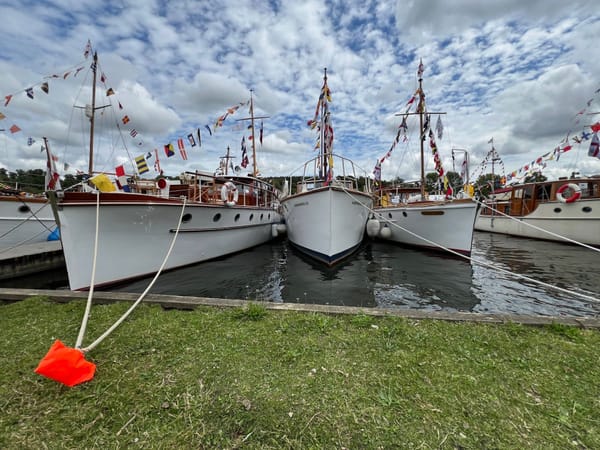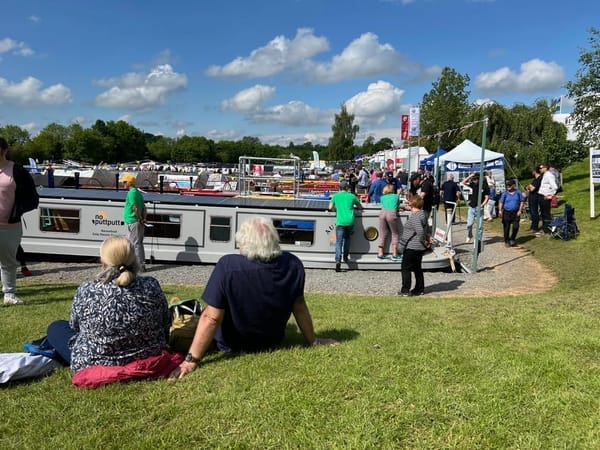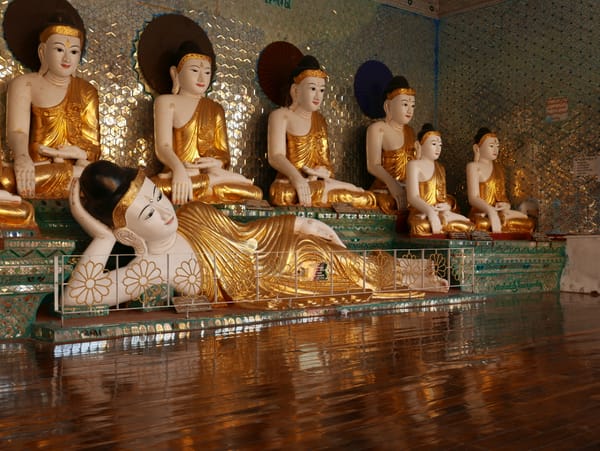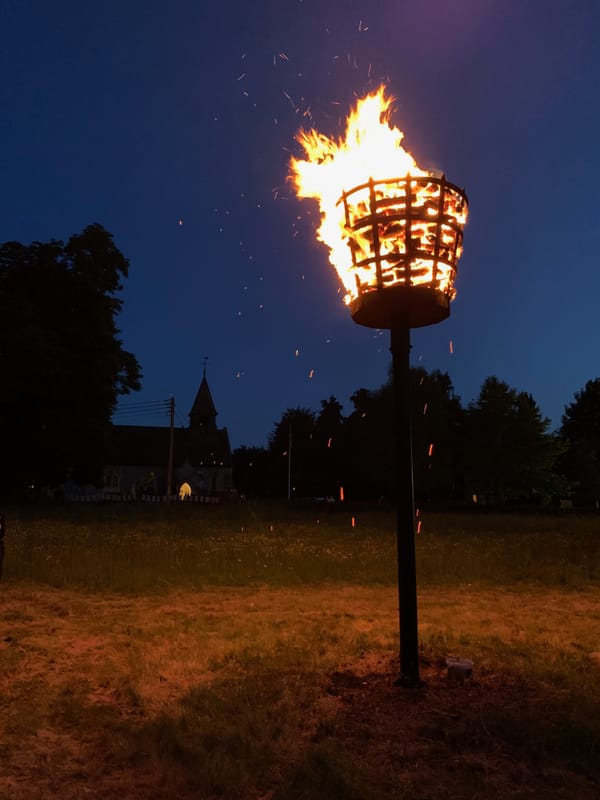Vietnam — Train from Hanoi to Ho Chi Minh City (Saigon), Vietnam — the SE5 on the Reunification Railway
Letting the train take the strain in Vietnam
September 2015
Collecting my ticket from Hanoi Station for my trip on the Reunification Express from Hanoi to Ho Chi Minh City (Saigon), which I had booked online with the help of The man in seat 61, and baolau.vn, was easy. I went to Hanoi Station, showed the reference number on my phone and picked up the ticket. I collected my ticket a few days early in case of a problem, but everything was fine.
For the journey, I travelled in a ‘soft sleeper', a shared 4-berth cabin. There were also several other types of cabins available on the train. To me, the 'soft sleeper', one of the more expensive tickets, seemed to be the best option to meet my needs.
The waiting room at Ga Hà Nội (Hanoi Station) station had a small snack stand and toilets. There was no train departure board — which was a bit worrying.
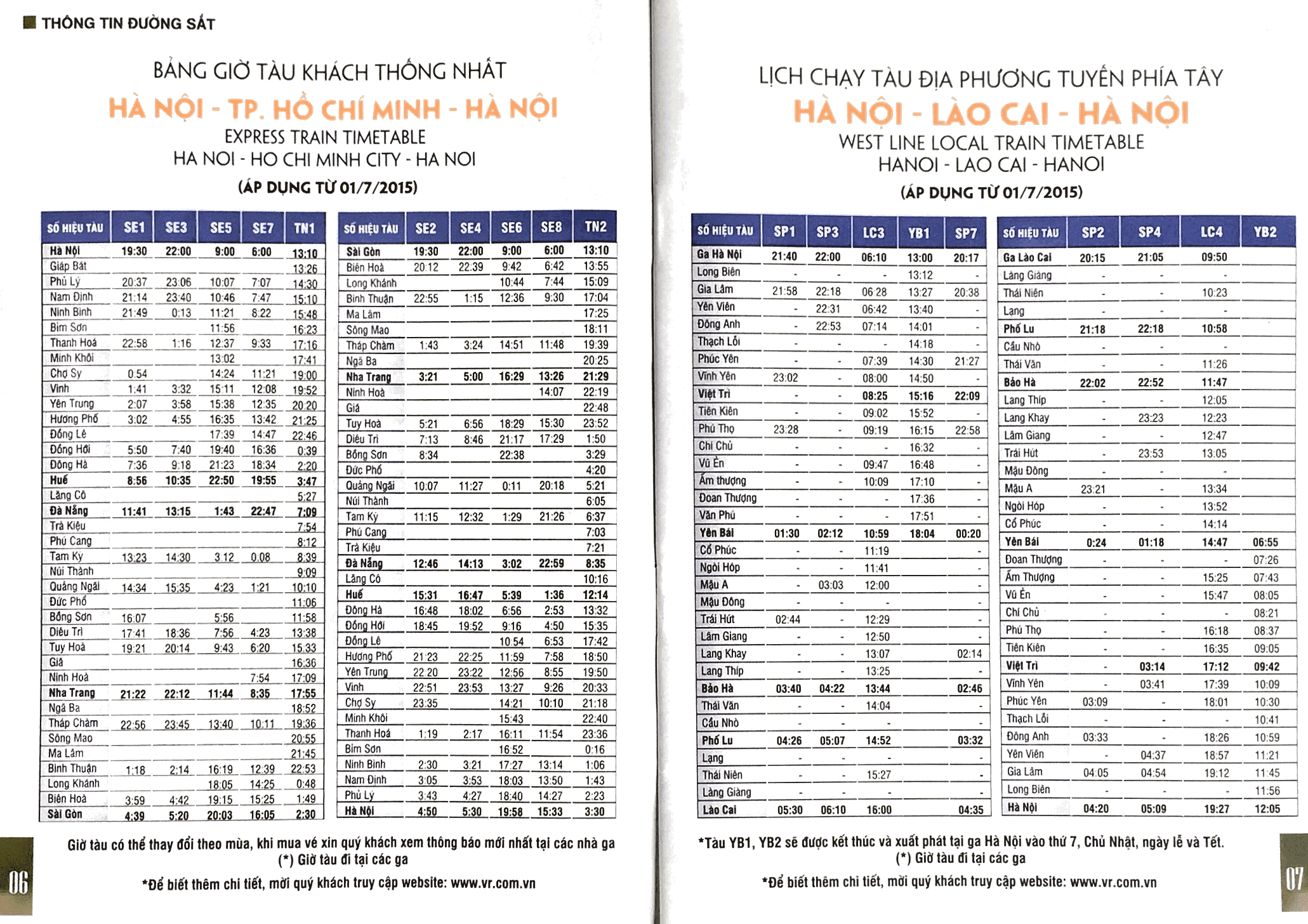
I had read that 'scammers' were operating at the station. Their 'trick' was to ask to see your ticket and then help you to the train, for which they would then demand a large tip. I saw no sign of such scammers operating.
It might be a good idea to read up on the history of Vietnam before boarding the train because I got asked many questions by one passenger, via another passenger interpreting, about what I knew about Vietnam and what I thought of General Vo Nguyen Giap who died in 2013 at the age of 102. (I later discovered this obituary for the general on The Guardian website.)
I boarded the train at 8:15 am, and my ticket had all the information. Coach 9, berth 10. Perfect.
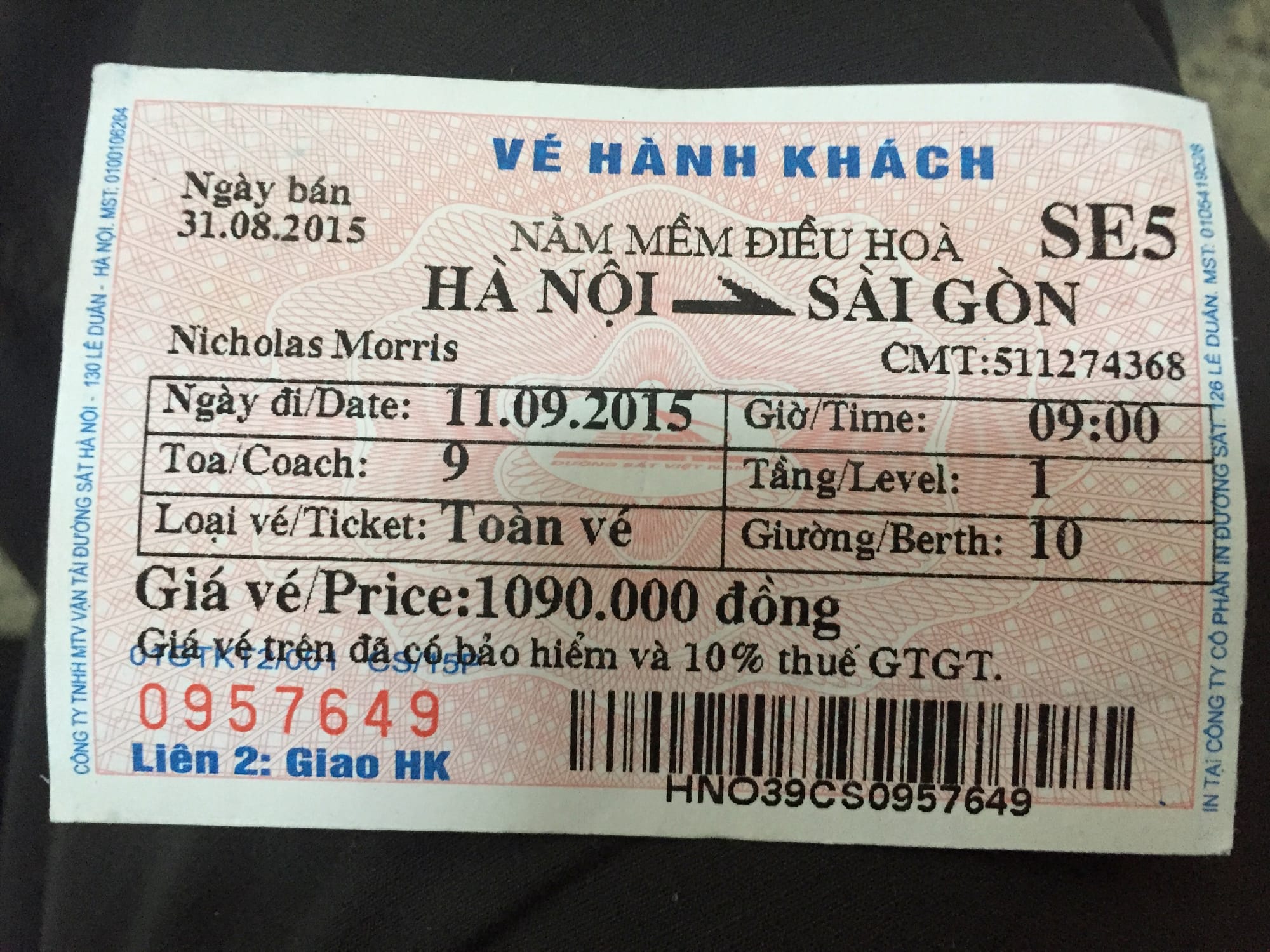
Below is a photograph of the 'soft sleeper' compartment for four. There were four beds with a pillow and a duvet: a small table, a bin, and storage space. No seats. You had to sit on the bed when not sleeping. There were two power outlets, but I couldn't get the one near my bunk to work (I think it was a problem with my adaptor) as another passenger got the power socket to work near their bunk. Getting in and out of the top bunk was tricky and required a small flick-down step by the side of the door.
I could stow my main bag under my bed; however, the room would be (and was) very cramped with four people. The distance between the upper and lower bunks was such that I couldn't sit up (people taller than 6 feet (ca. 183 cm), be warned). The air-con was powerful, almost too cold. When a third person joined our four-berth compartment (top bunk), he closed several air-con vents.
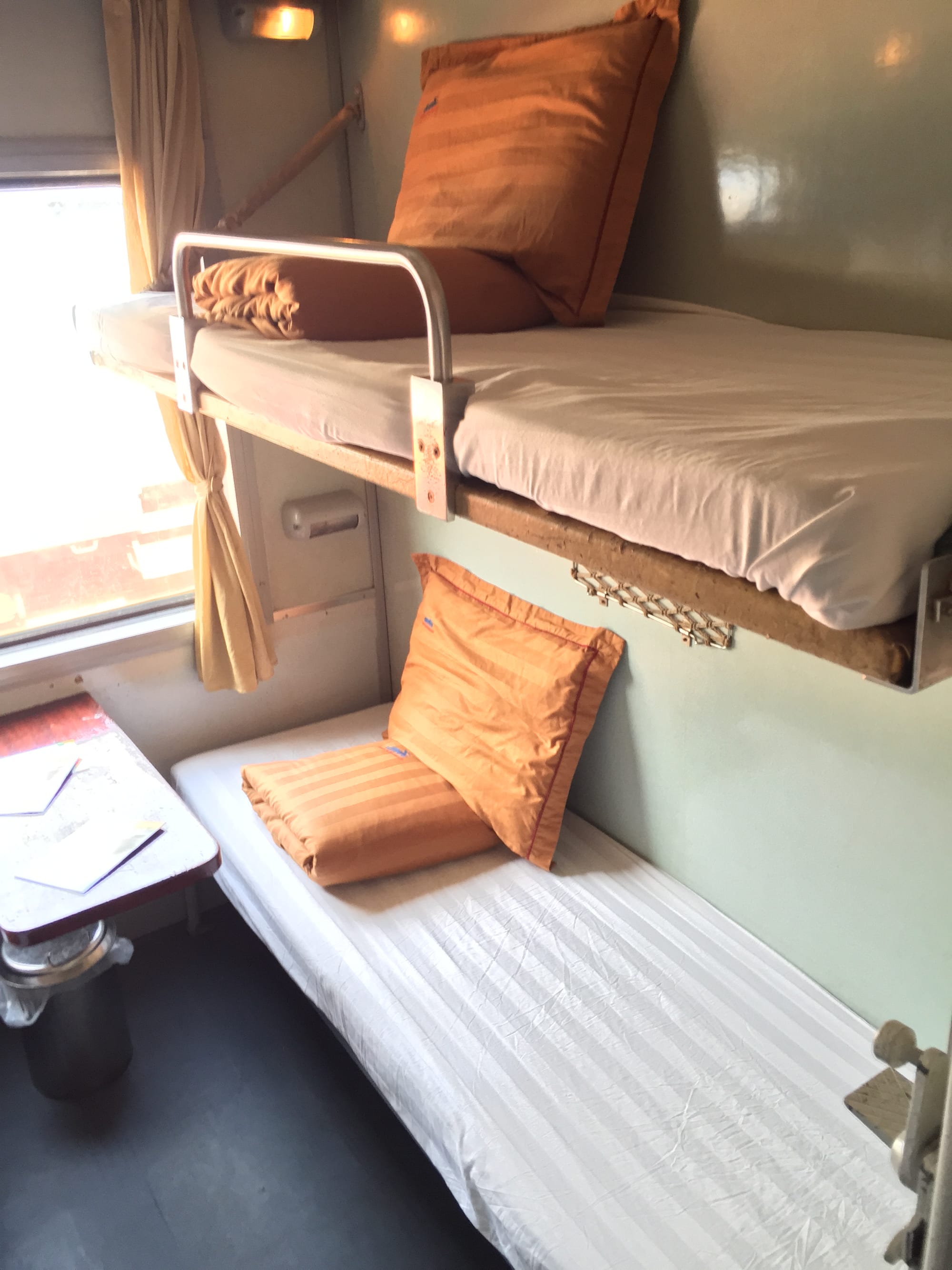
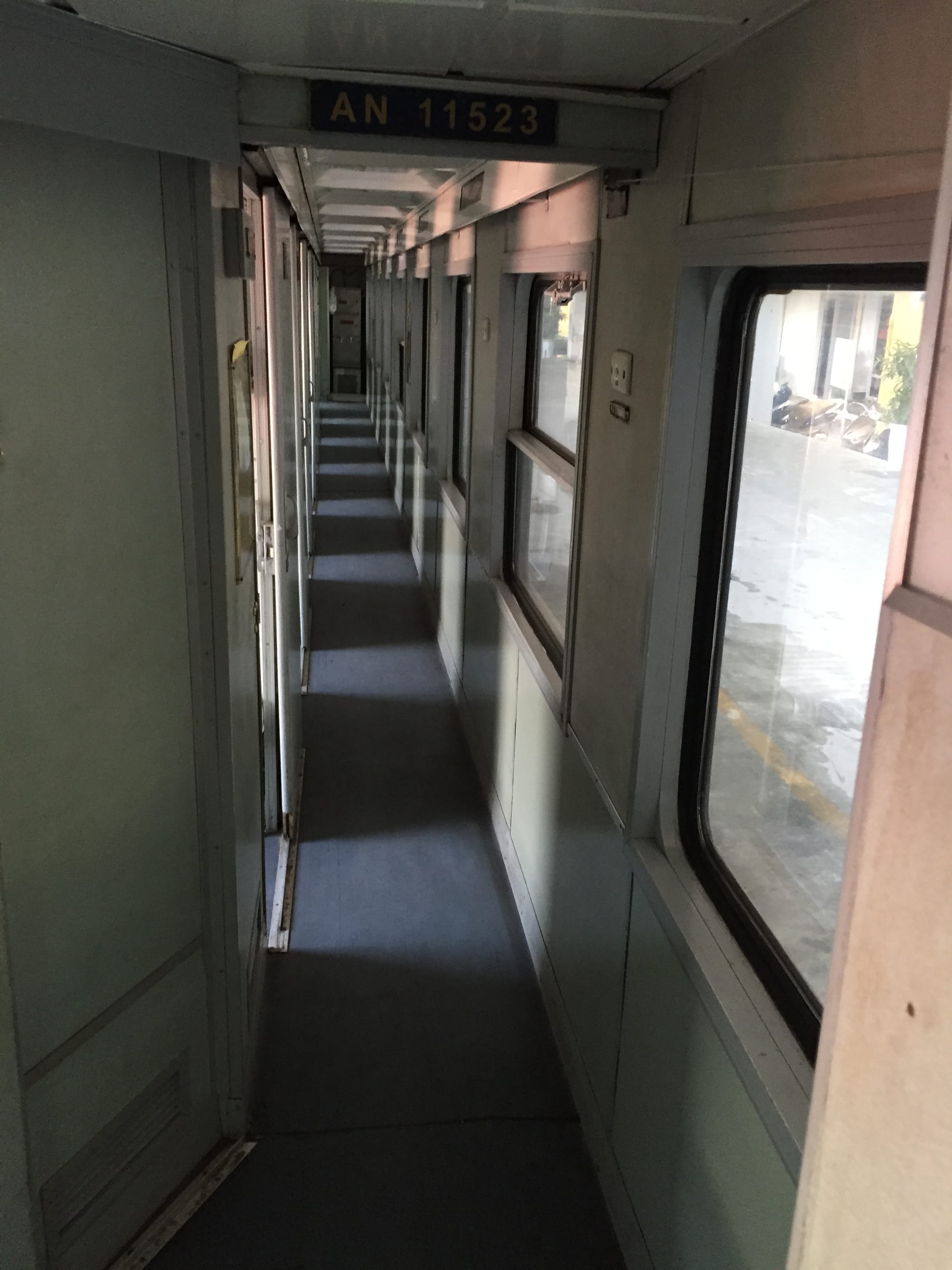

The toilets were not the nicest I've seen. (Why are train toilets always so bad? They are often shocking in the UK.) And it was challenging to use them when the train was at speed due to the roughness of the ride. The toilets ran out of paper early into the trip, so bring your own!
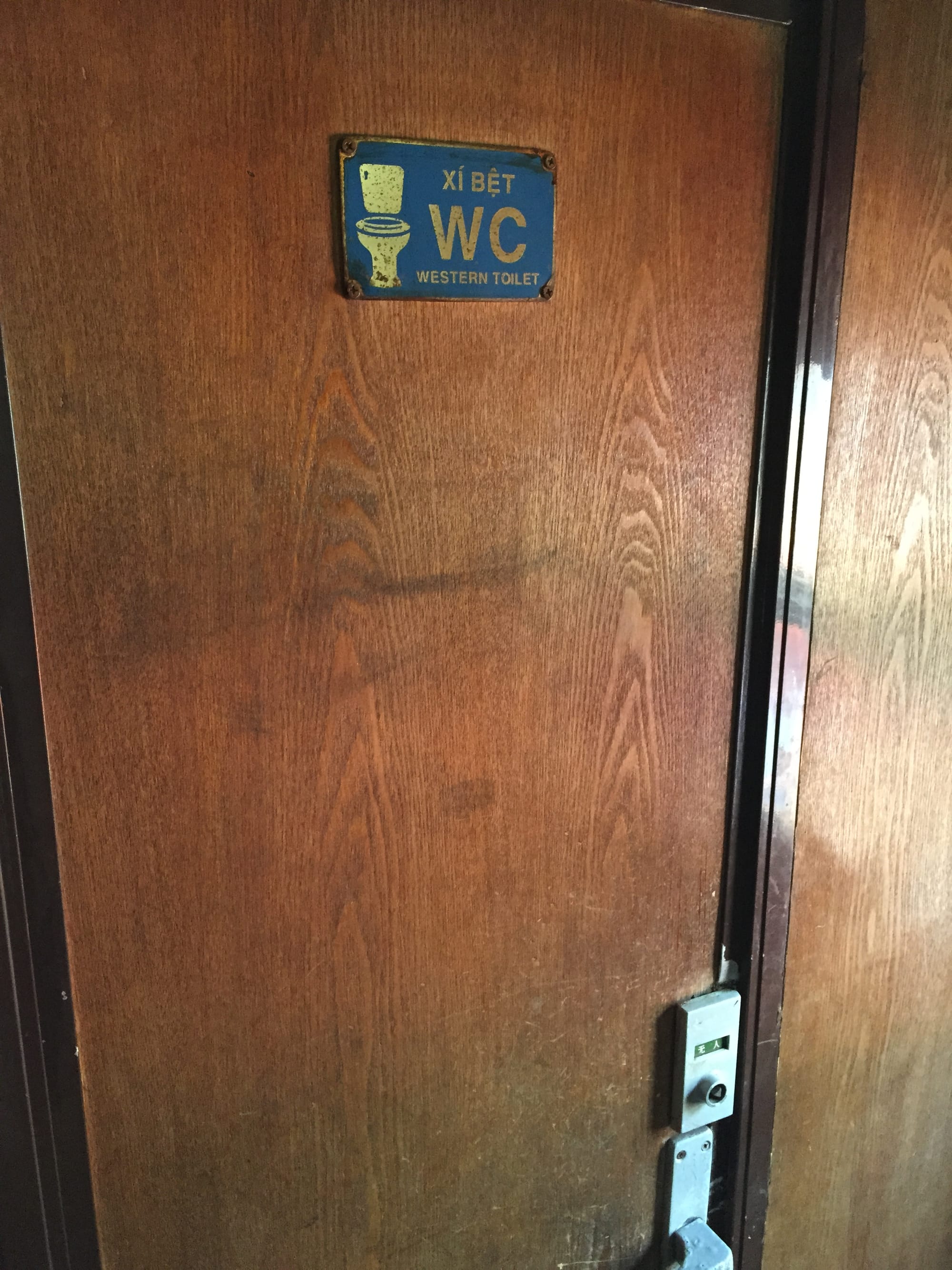
Getting ready to leave Hanoi Station.
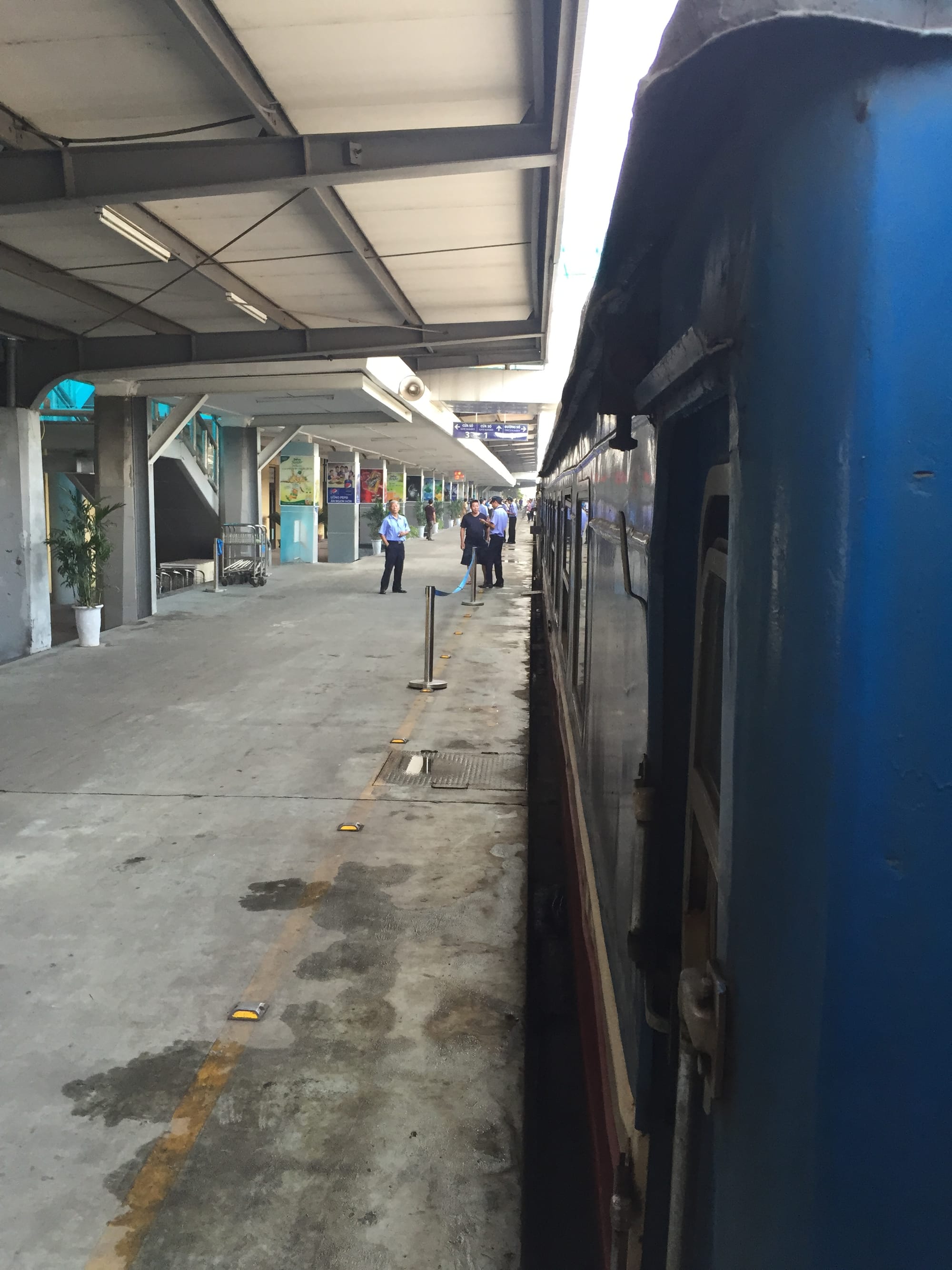
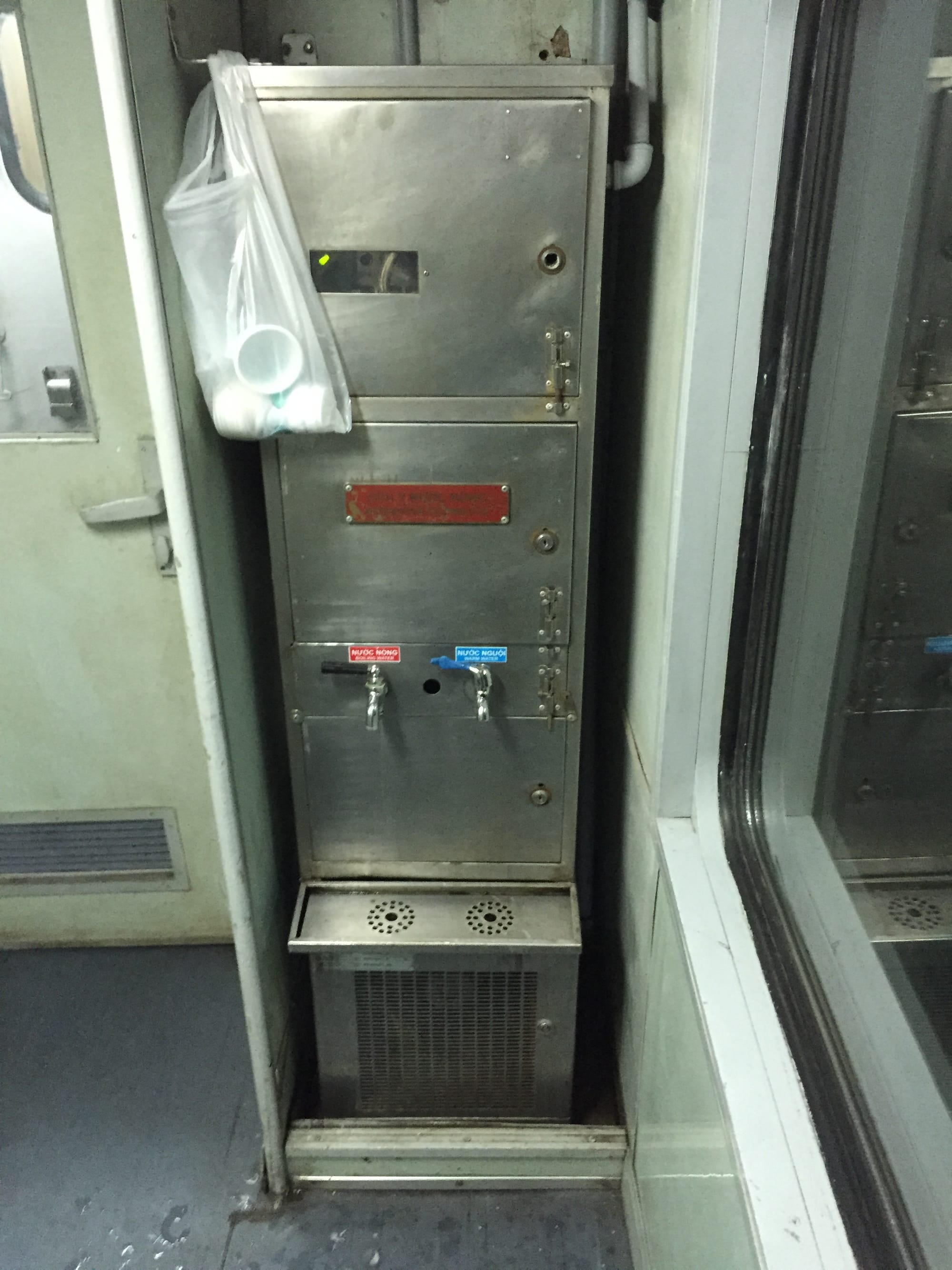
Numerous people on the train used the hot water station (above) to heat dried noodle dishes (Pot Noodles) they had brought onboard.
The train was due to leave at 9 am and left at bang on 9 am.
Day 1
As the train headed south out of Hanoi, we passed through several areas where the shops and houses fronted the single-track train line. The awnings of the shops missed the train by inches. There were no bridges across the tracks in the suburbs; it was all level crossings. It was great fun getting a brief glimpse of the crowds on the road waiting for the train to pass.
We were in the suburbs and the countryside within 25 minutes of leaving the central station.
There is a pretty good trolley service on the train, and it made its first visit shortly after we left the station. The trolley only seemed to offer crisps, popcorn, and a range of drinks. I hoped they would offer much more food than was evident because I had not brought many snacks. This meant it could have been a long and hungry 35 hours.
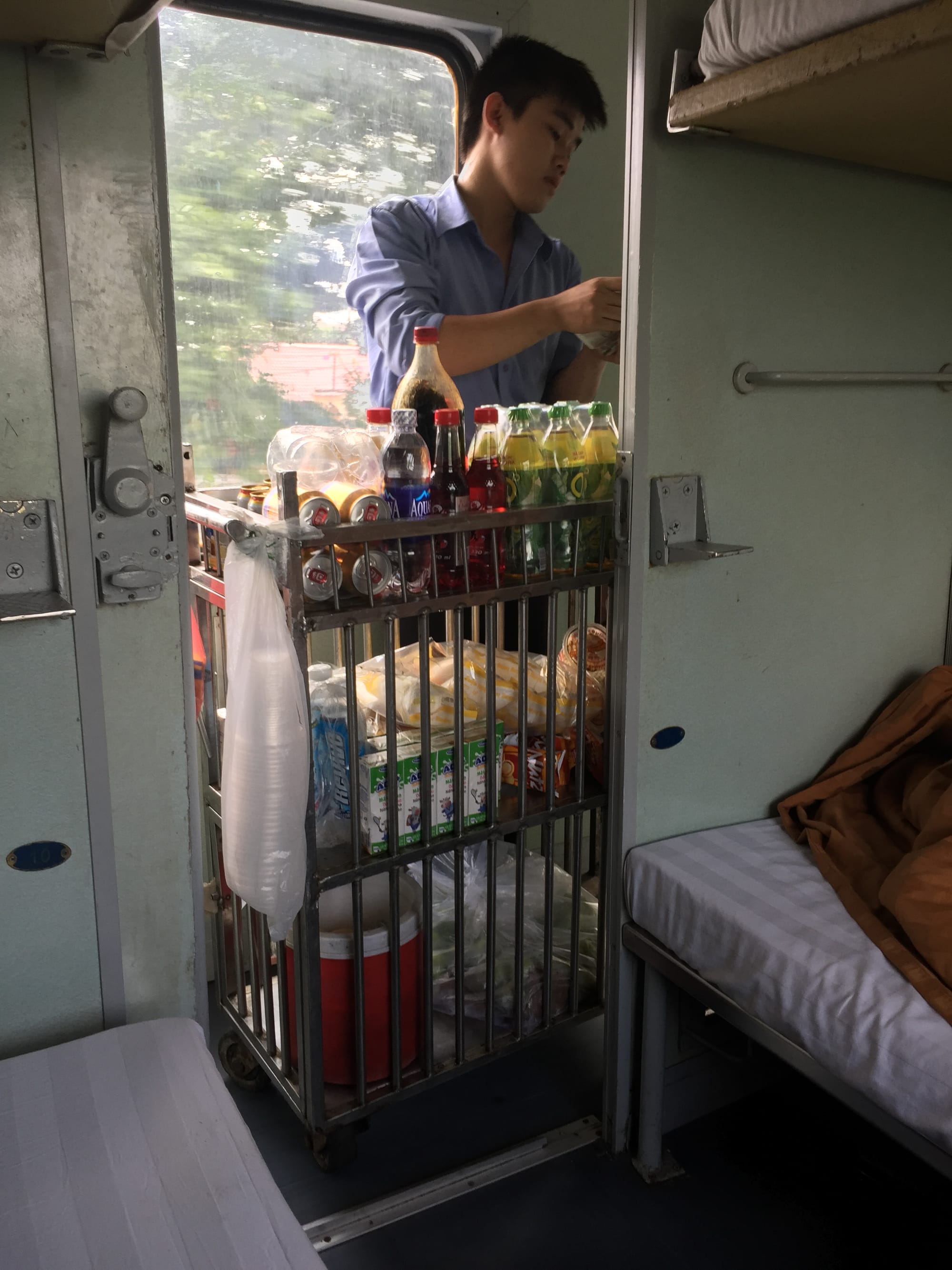
Shortly after the visit of the first trolley, a member of the train staff appeared at the doorway and took a lunch order. This happened around 9:45 am, and, as usual, I had no idea what I had ordered, when it would arrive, or even if I had to go and pick it up somewhere. The cost was 35000 Vietnamese dong (£1.25 GBP; $1.80 USD).
Later another trolley came by selling eggs, sweetcorn and what looked like satay, and some rice.
Mid-morning, the train guard walked by and squirted perfume into the room. Why?
Around mid-morning, I was joined by another passenger. The man, now sharing the compartment with me, insisted on showing me a photo of someone in a military uniform. By the looks of the uniform, he must have been someone significant in the army. Why had he shown me this photograph? Was it some new form of communication I was unaware of? Maybe photos are the way to go? I later discovered who was in the photo — General Vo Nguyen Giap.
Lunch was served around noon from a trolley that came down the carriage, and you picked what you wanted. I ended up with the following:
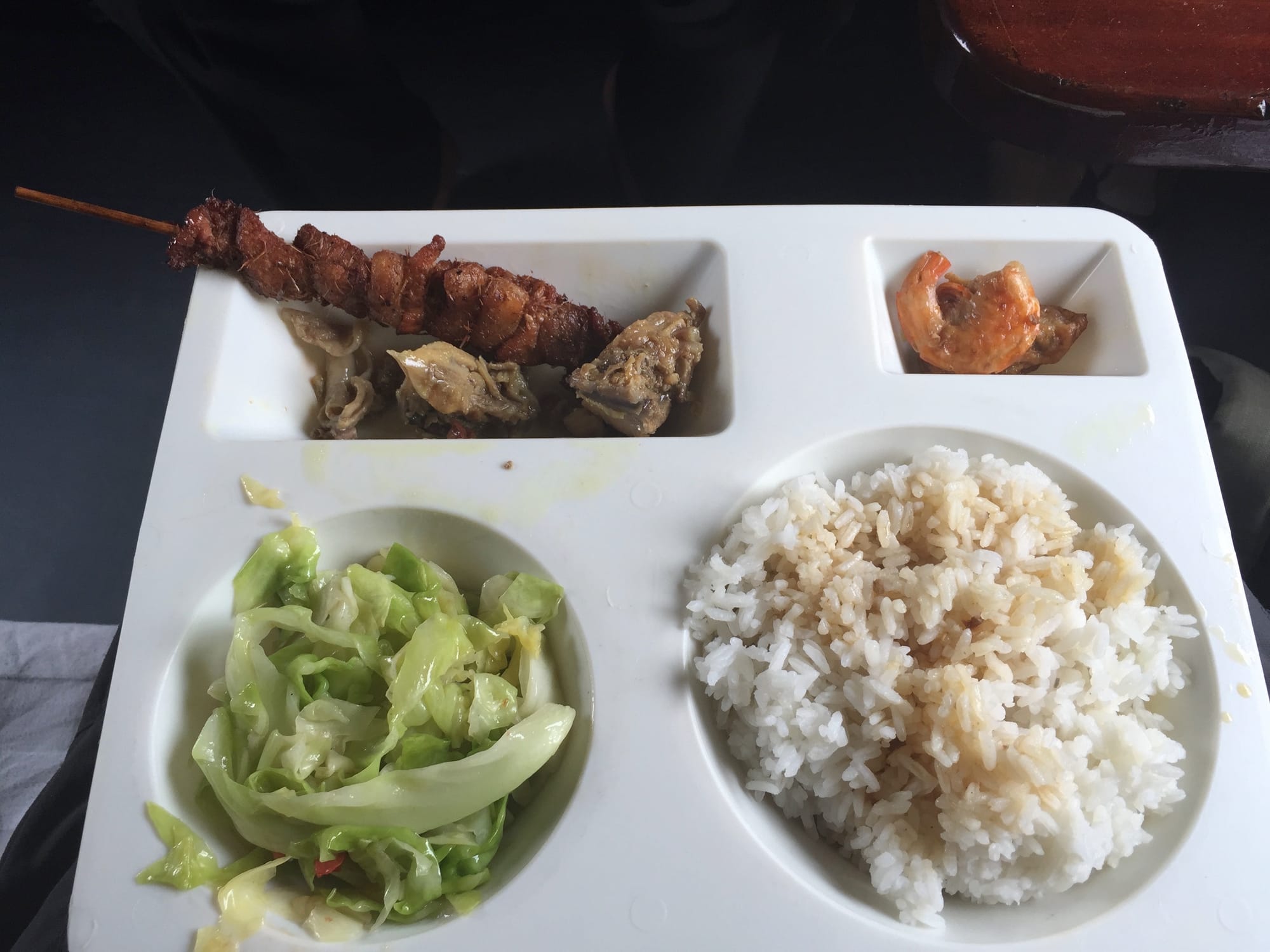
So, I was now even more confused by lunch. Was this what I ordered earlier?
After the meal, we stacked the trays by the door for collection.
This process was repeated for the evening meal.
The ride on the train was very bouncy, and I couldn’t decide if it was due to poor tracks or poor suspension in the carriage. The bouncing was so bad that walking around the train or typing was difficult. As Vietnam is building a high-speed rail link between Hanoi and Ho Chi Minh City (Saigon) based on Japanese engineering, I doubt the tracks will be improved or renewed soon. I’ve got to come back and ride on that train.
I thought there was a buffet car on the train, but if there was, I couldn’t find it. This was worrying as I needed a supply of coffee.
Finally, around mid-afternoon, a cart came by, and I was able to buy a hot sweet coffee from 15,000 Vietnamese dong (£0.50 GBP; $0.75 USD). All I could say about the coffee was that it was hot and very sweet.
As we headed south, the countryside changed, and hills started to appear.
Vietnam from the train was beautiful. Very green with many trees and ponds. Lots of rice fields, and the number of people out working the fields was remarkable. The green of the fields was very bright, particularly in the rice fields, giving the countryside a fresh feel. The thing that surprised me was the number of ponds. There were ponds everywhere.
I was also surprised by the number of church spires I could see.
After about 6 hours, the train started climbing through forests and woodland. The route had some fantastic views. Unfortunately, it was very difficult to photograph the views as I couldn’t find an open window, and the window on my cabin needed a serious clean.
As the journey progressed, it occurred to me that it may be worth taking a train at a different time as we started to get into some very interesting scenery about 9 hours into the journey, just as it was getting dark.
Throughout the journey, the people in my carriage kept changing.
At about 10 hours into the trip, I was joined by Lee, a 24-year-old law lecturer travelling south to give some lectures. Lee was kind enough to tell me a lot about Vietnam, to share her sugar cane snack (handy hint: spit out the material once you have chewed it, don't attempt to swallow it), and she also acted as a translator with the guy who was sharing the compartment. It turned out that the photograph on the phone was of his favourite Vietnamese Army general — General Vo Nguyen Giap, who died in 2013. I also discovered that he struggled to get into the top bunk because he had been shot in the knee during his service in the army. With Lee translating, I offered to swap bunks so he could take the lower berth. This instantly made us friends, and he insisted on buying me some beers. I had no real idea what we were talking about, but we laughed a lot.
Day 2
Not the best, or not the worst, night’s sleep I've had.
The train was not designed for anyone over 6 feet (ca. 183 cm), as there were several things on which I could bang my head (as I discovered during the night). The beds were long enough but could have been a bit wider.
I finally got up around 5:30 am, as it was getting light. I spent the night in the top bunk (even though I had the bottom bunk booked) as the man who had been put in the top bunk had difficulty climbing due to bad knees.
At some time during the night, the train reversed direction. I had no idea or recollection of when this happened, as the train had made several stops.
Overnight, the countryside had changed. We had left behind the mountains and the rice fields and now seemed to be in an area of scattered houses and coconut palms.
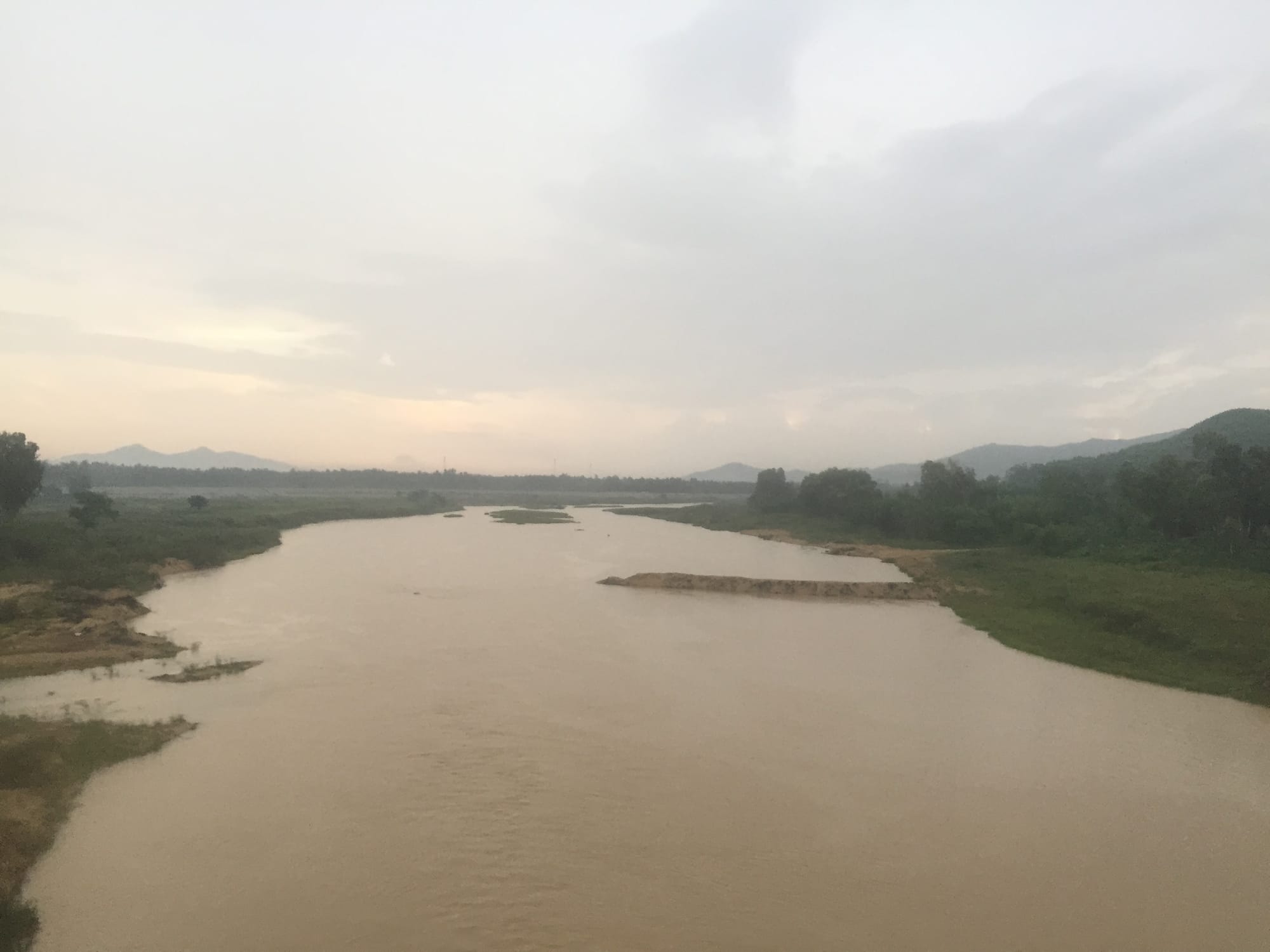
By day two, I still hadn't got the hang of the coffee on the train. A drinks trolley came around, and you could ask for hot coffee. The coffee was made by adding some powder to hot water (no idea what the powder was) and then a shot of a dark liquid from a coke bottle (I assumed that was the coffee).
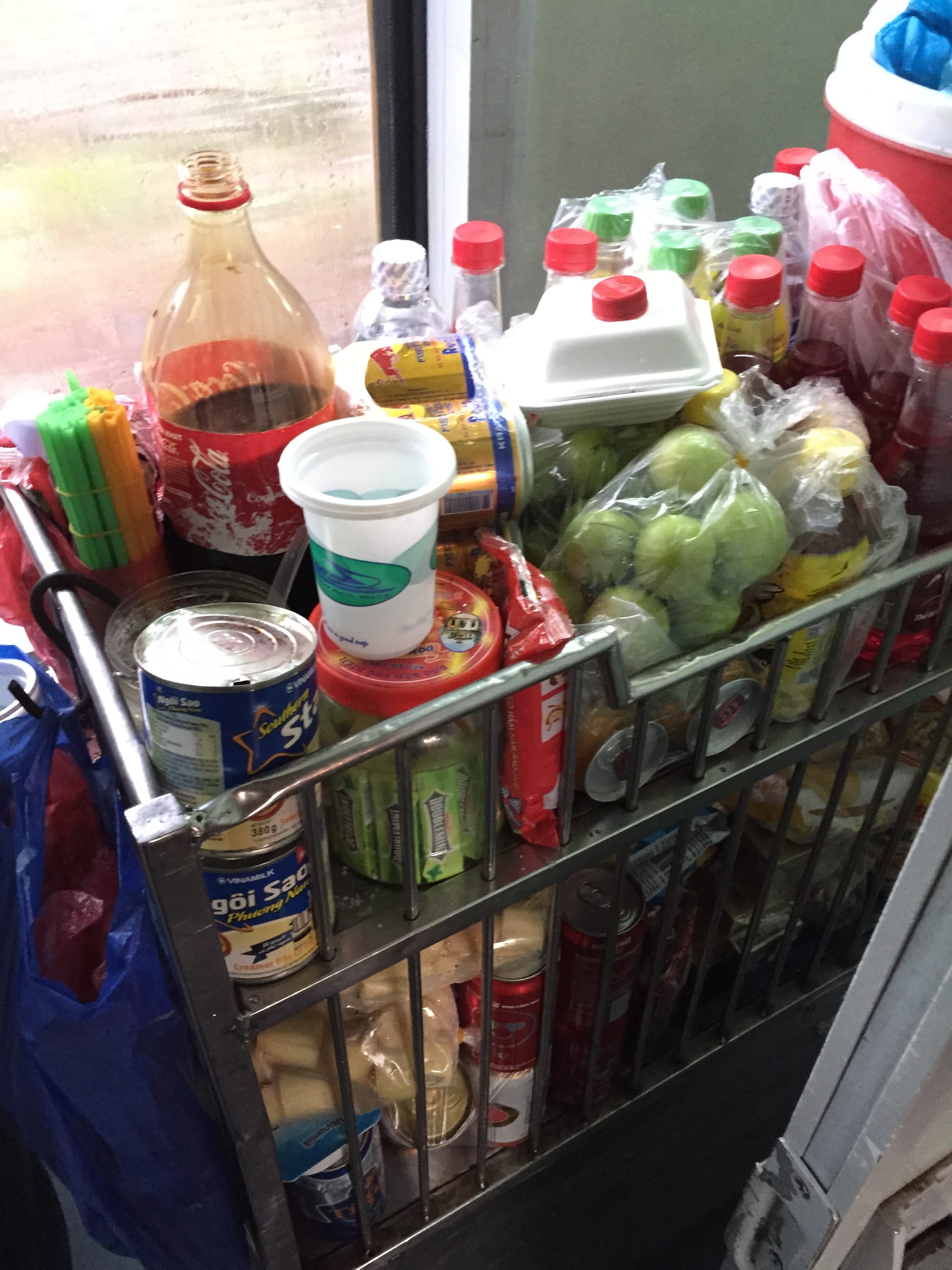
What resulted was something that was the colour of strong coffee, that was very sweet and tasted a bit like coffee.
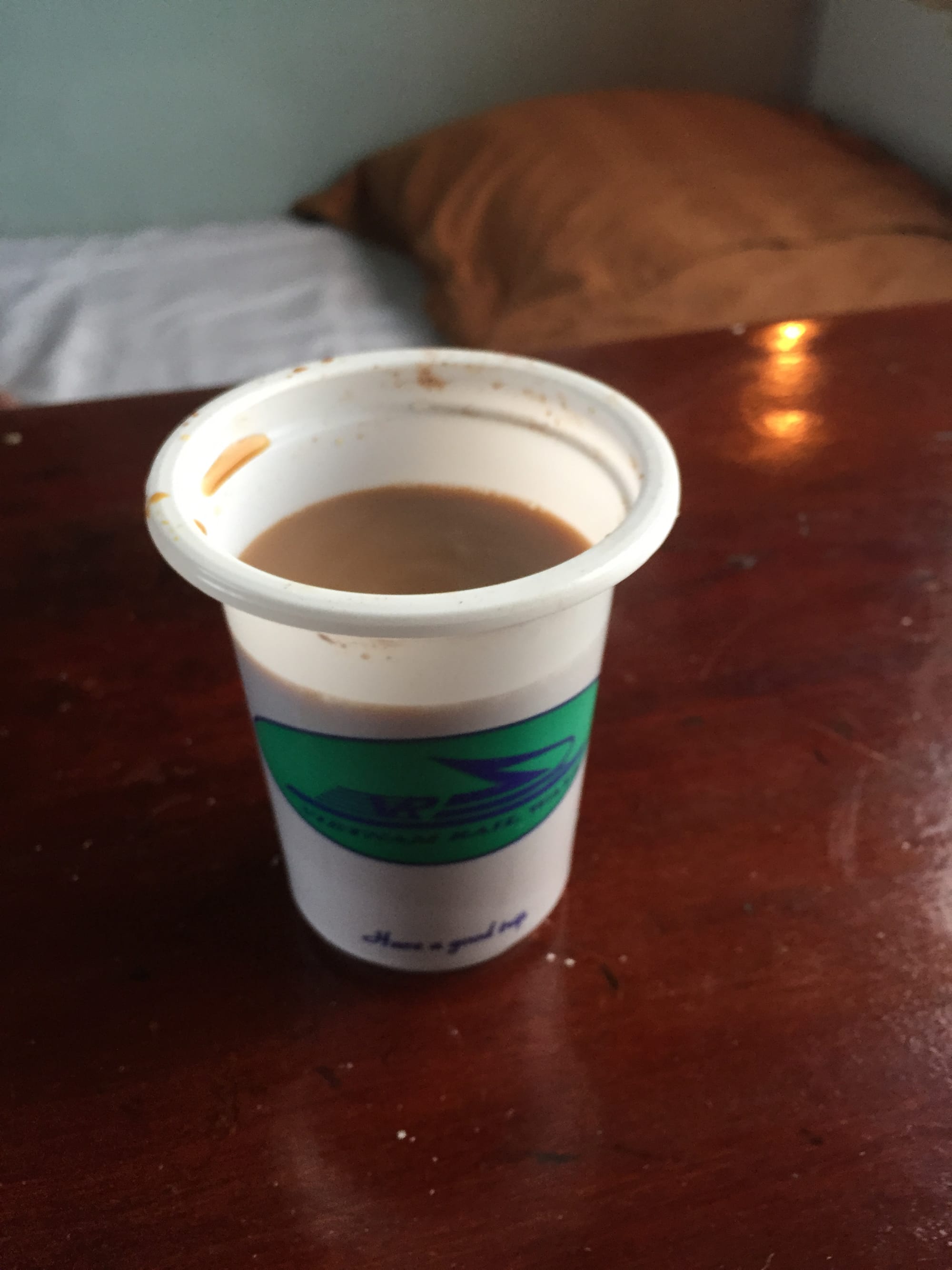
Breakfast on the train consisted of a small pot of rice and some processed meat for 20,000 Vietnamese dong (£0.70 GBP; $1.00 USD).
As we pulled into each station on the trip, we got a brief history and some information about the town in Vietnamese and English. A song about the town or the region often accompanied this.
At most stations, there were people selling stuff on the platform. You could either buy from the corridor window (one of those small windows that opens just enough to exchange money to buy a small bag of goods but not enough to allow you to take a photograph) of the carriage or get off the train at stations to make a purchase if there was a significant stop.
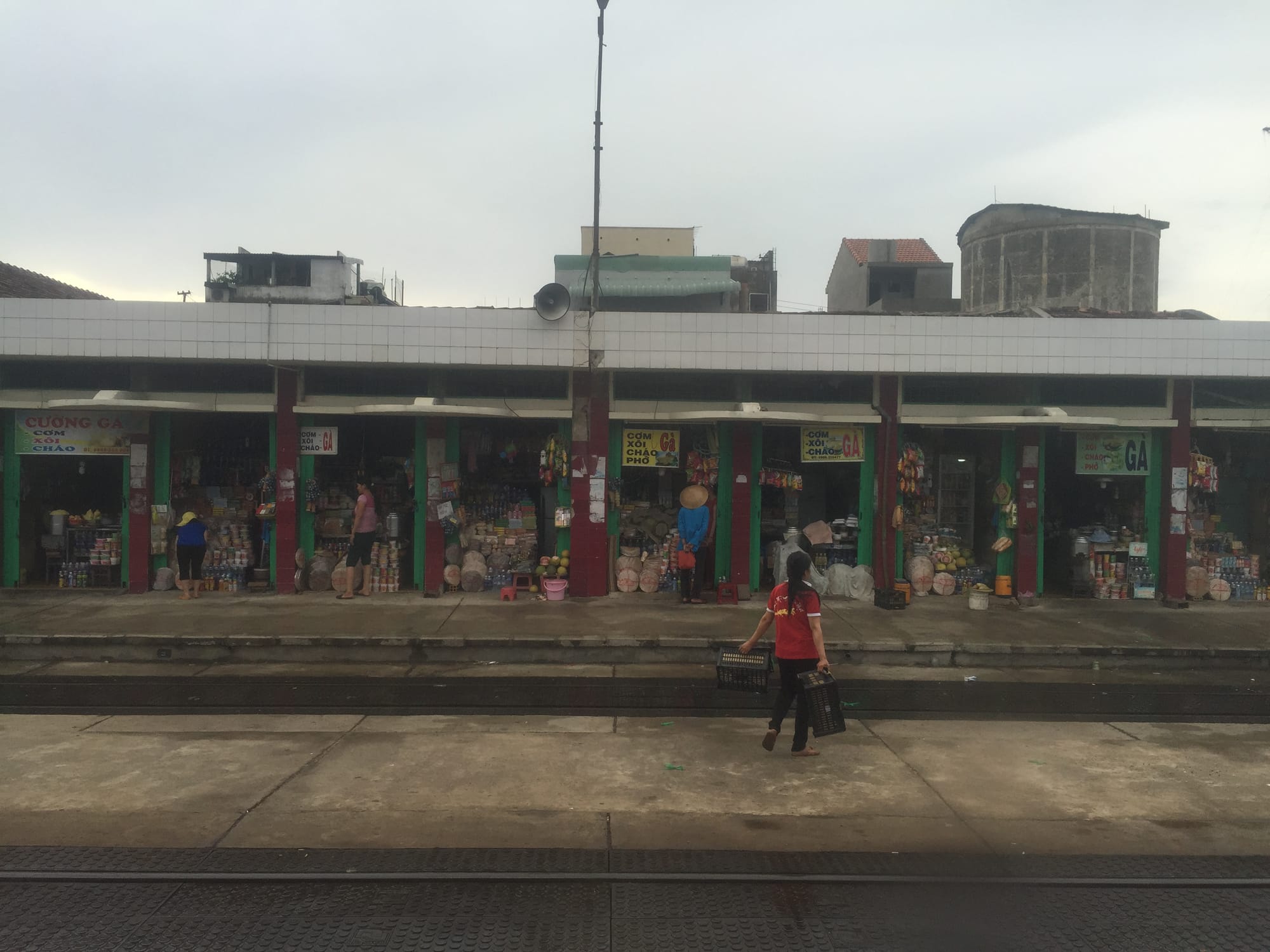
We did get some unexpected extended stops on the train. These were usually to wait for a train coming down the line as, in several places, it was single track.
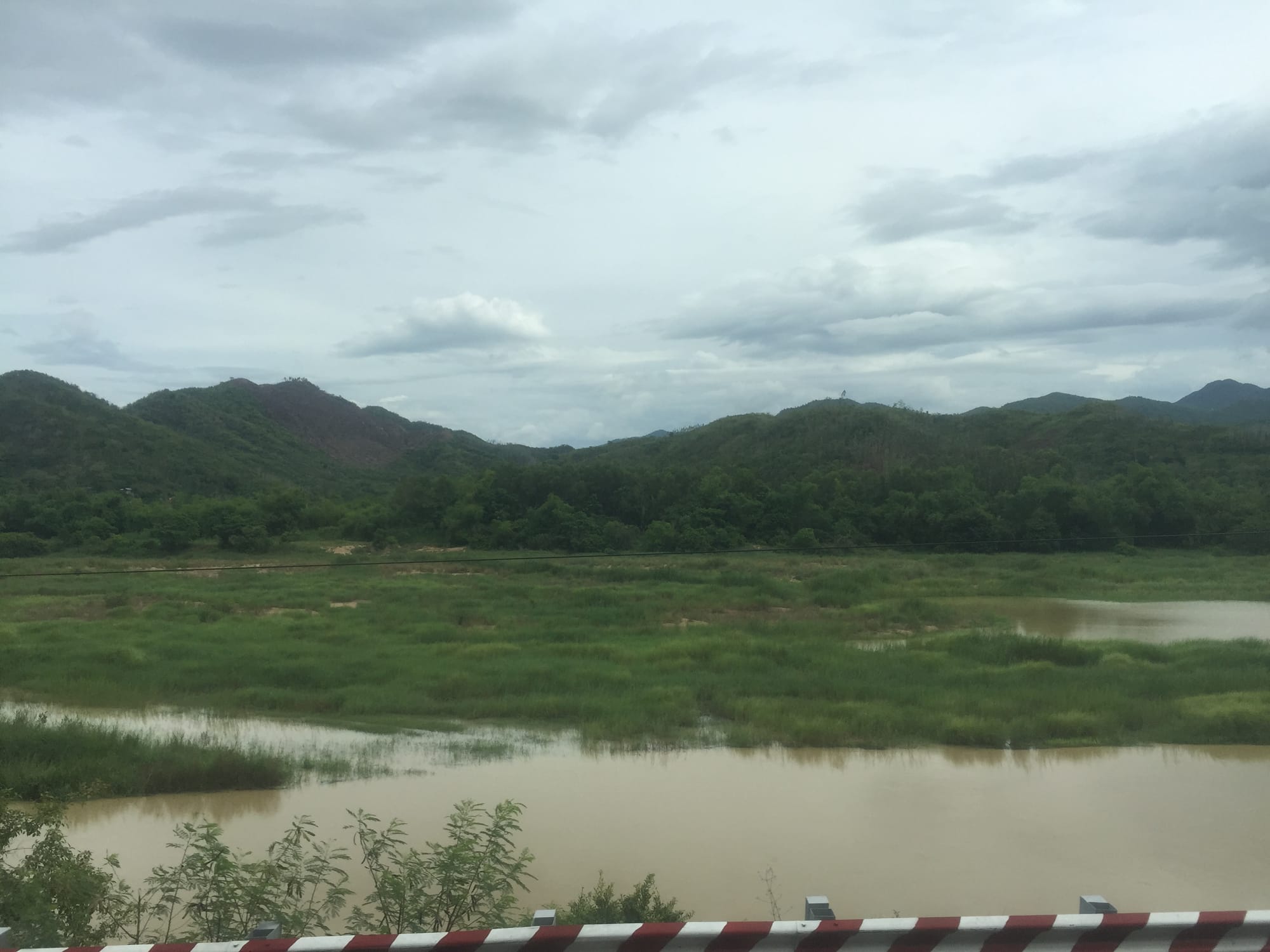
There were no lights on the train during daylight, so it got very dark when we went into the tunnels.
After 25.5 hours into the trip, I finally got to see the sea.
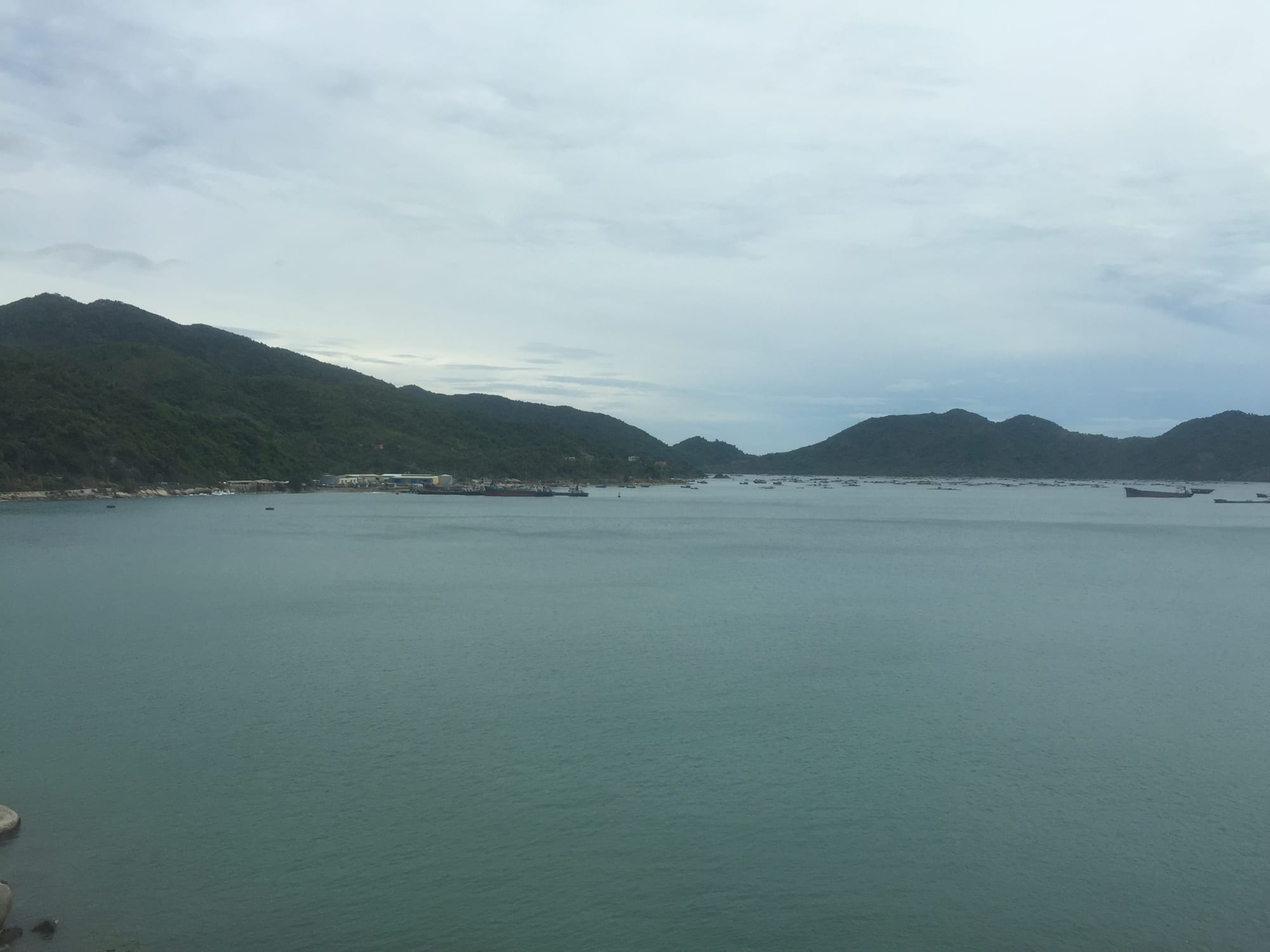
The coastline looked stunning from the train, with some great-looking sandy beaches.
Along the section by the sea, the track went through a series of short tunnels, so the carriage was regularly plunged into darkness.
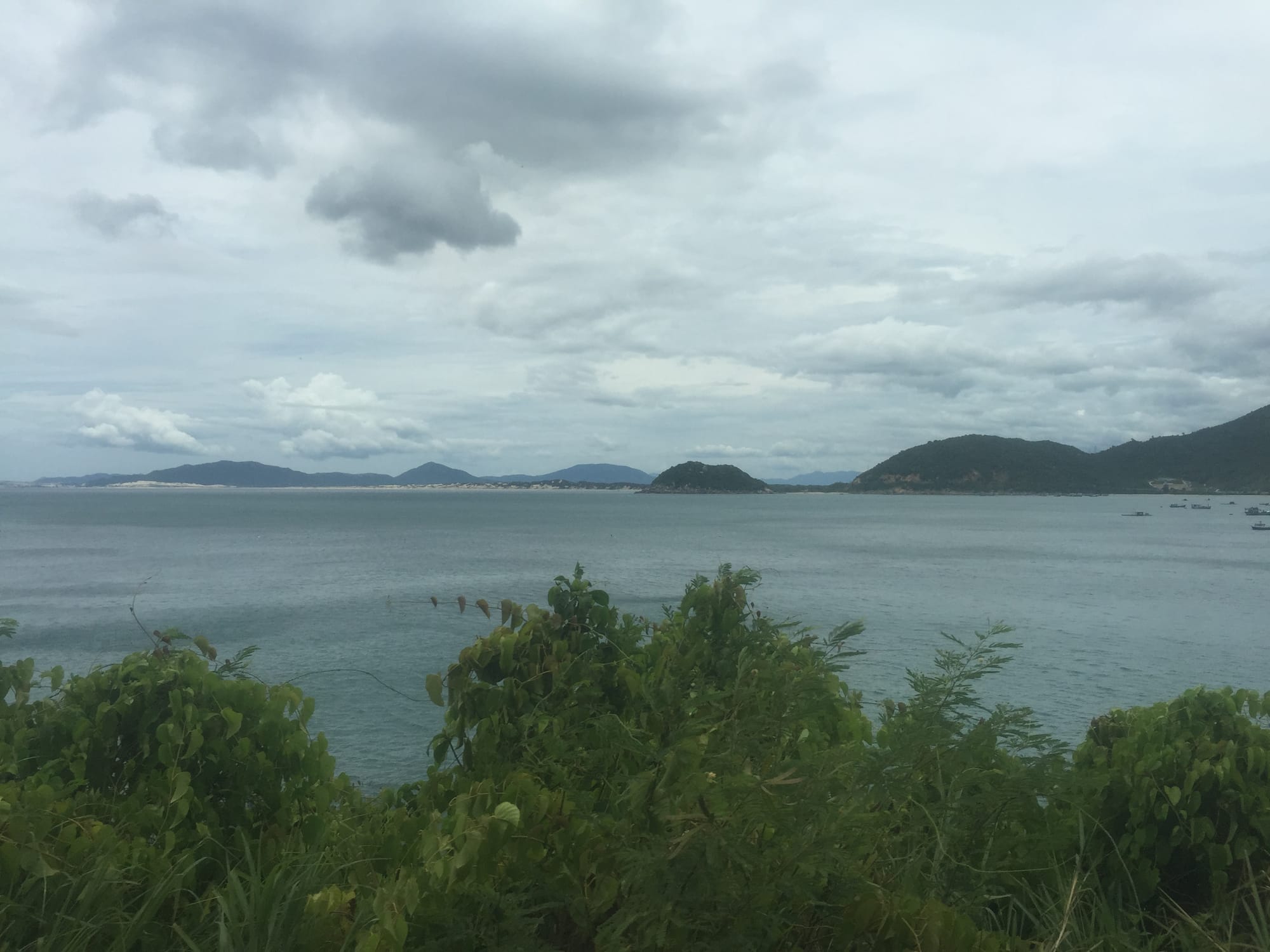
The lunch cart came through the carriage at 10:50 am, which, I felt, was too early for lunch. I assumed it was a mid-morning snack and that the trolley would return later. I was wrong. The trolley didn't return, so I didn’t get any lunch.
People were getting on and off the train into the sleeping compartments. I went to bed, sharing a four-berth compartment with three people. I woke in the middle of the night to find we were now a group of 4, and yet in the morning, we were back to 3 — but not the 3 I had started the night with. Between all this coming and going, bedsheets, blankets, and pillows were not changed. By 11:50 am on the second day, I had the compartment to myself.
The countryside got drier and less green as we got closer to Ho Chi Minh City (Saigon). The soil seemed parched, and I saw several dried-out streams and rivers.
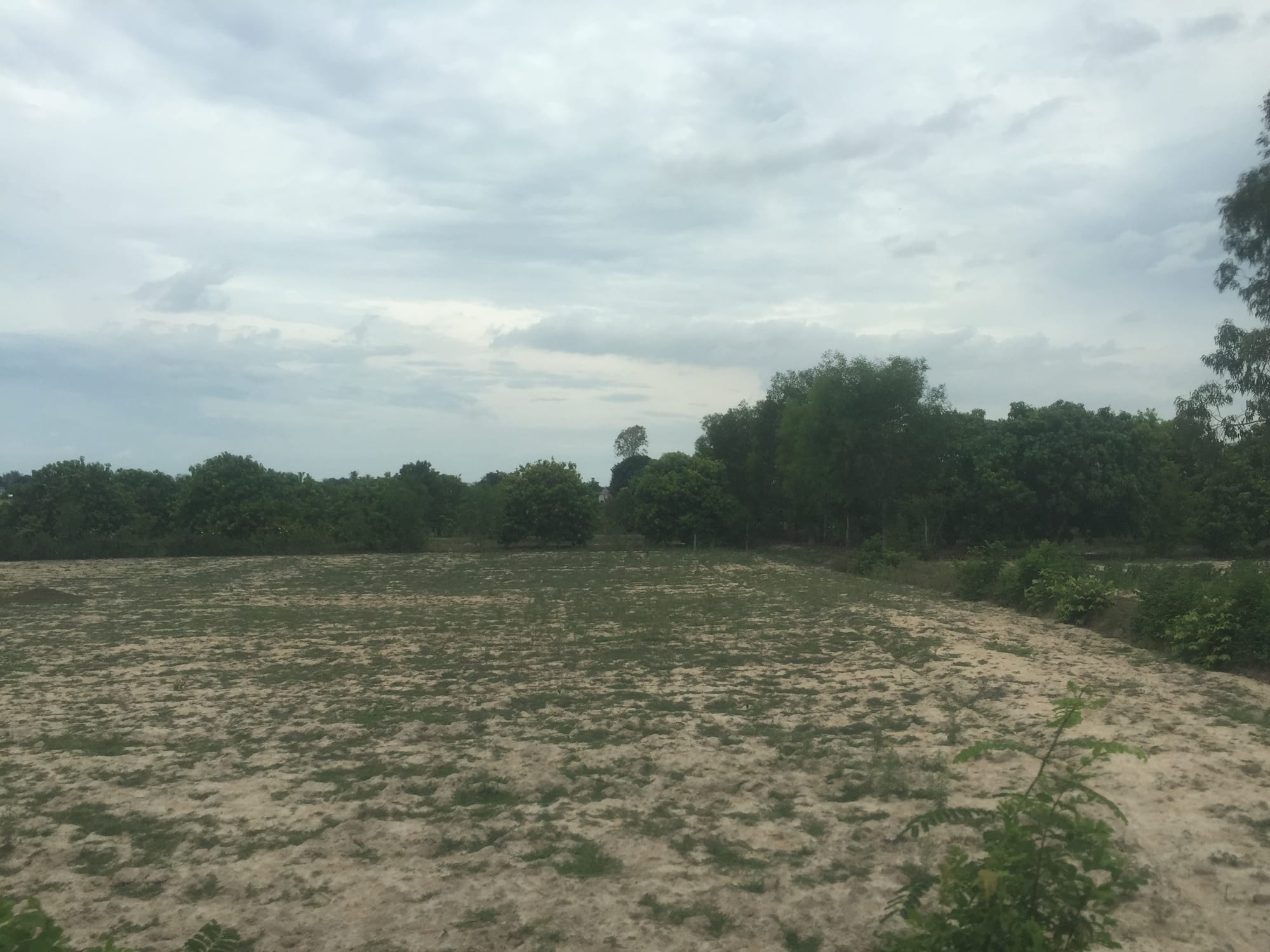
And then, within a few miles, we were back into a landscape of water and rice fields.
The closer we got to Ho Chi Minh City (Saigon), the more frequent and longer our pull-over stops seemed to get to allow trains to pass in the other direction.
The countryside kept changing. I have seen views on this trip that have reminded me of many parts of the world. The view below made me think of one of the long train rides I took across Australia.
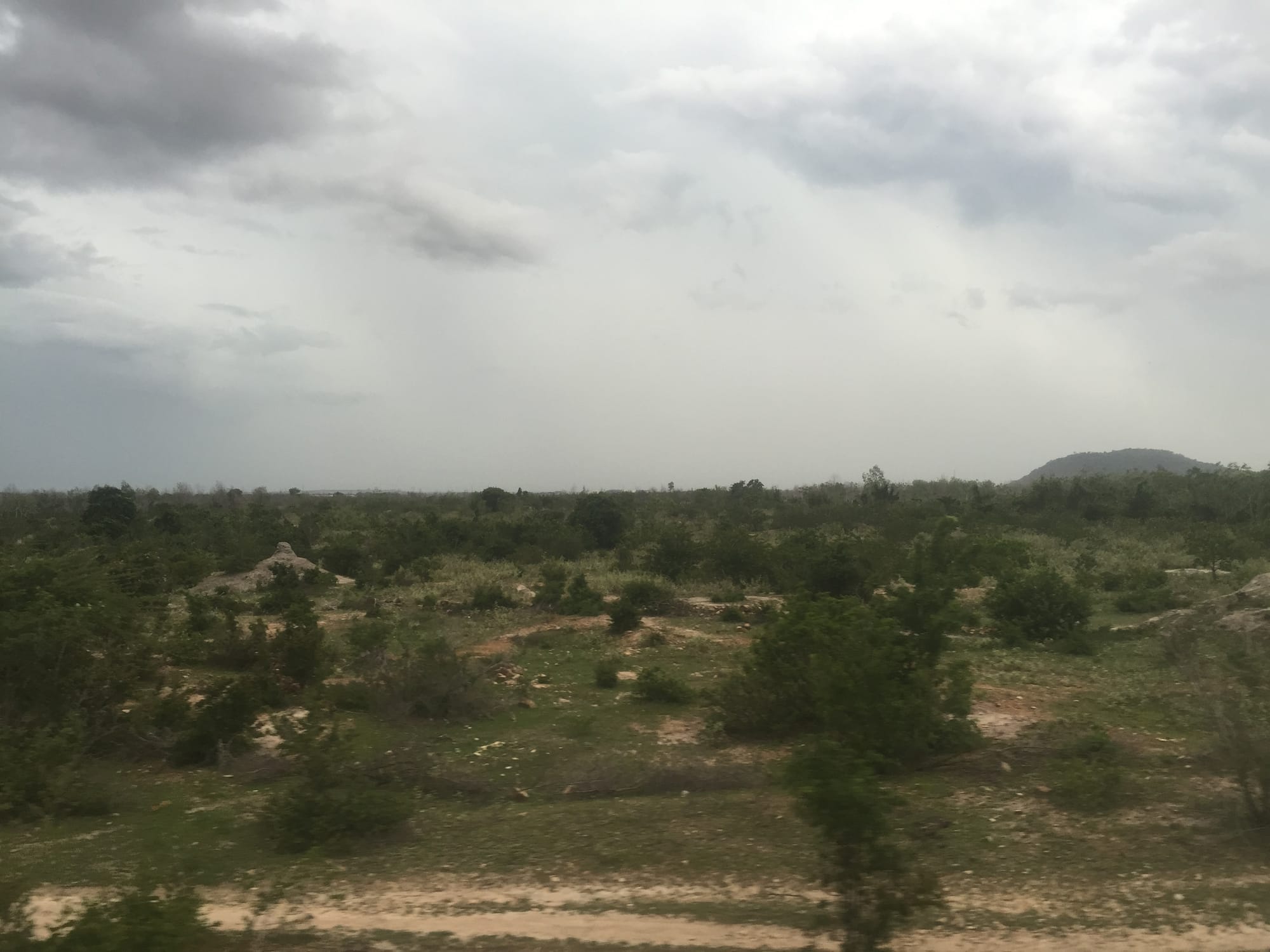
Dinner was interesting. The cost was 25000 Vietnamese dong (£0.90 GBP; $1.40 USD), and it was an instant noodle dish to which extra chicken and some vegetables (spring onions) were added. It was surprisingly tasty.
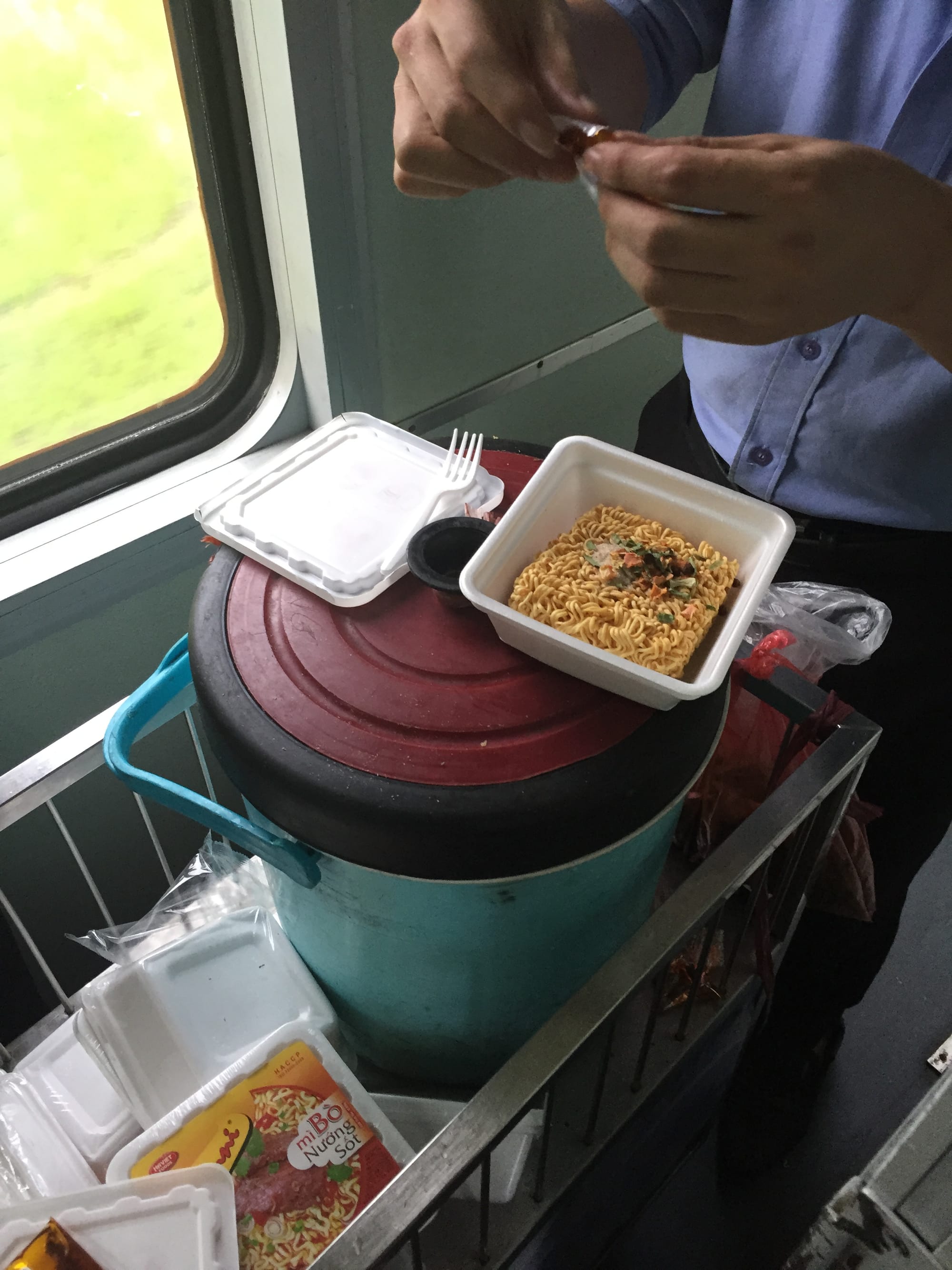
As we rattled down the track, I watched, amazed, as a big storm appeared on the horizon.
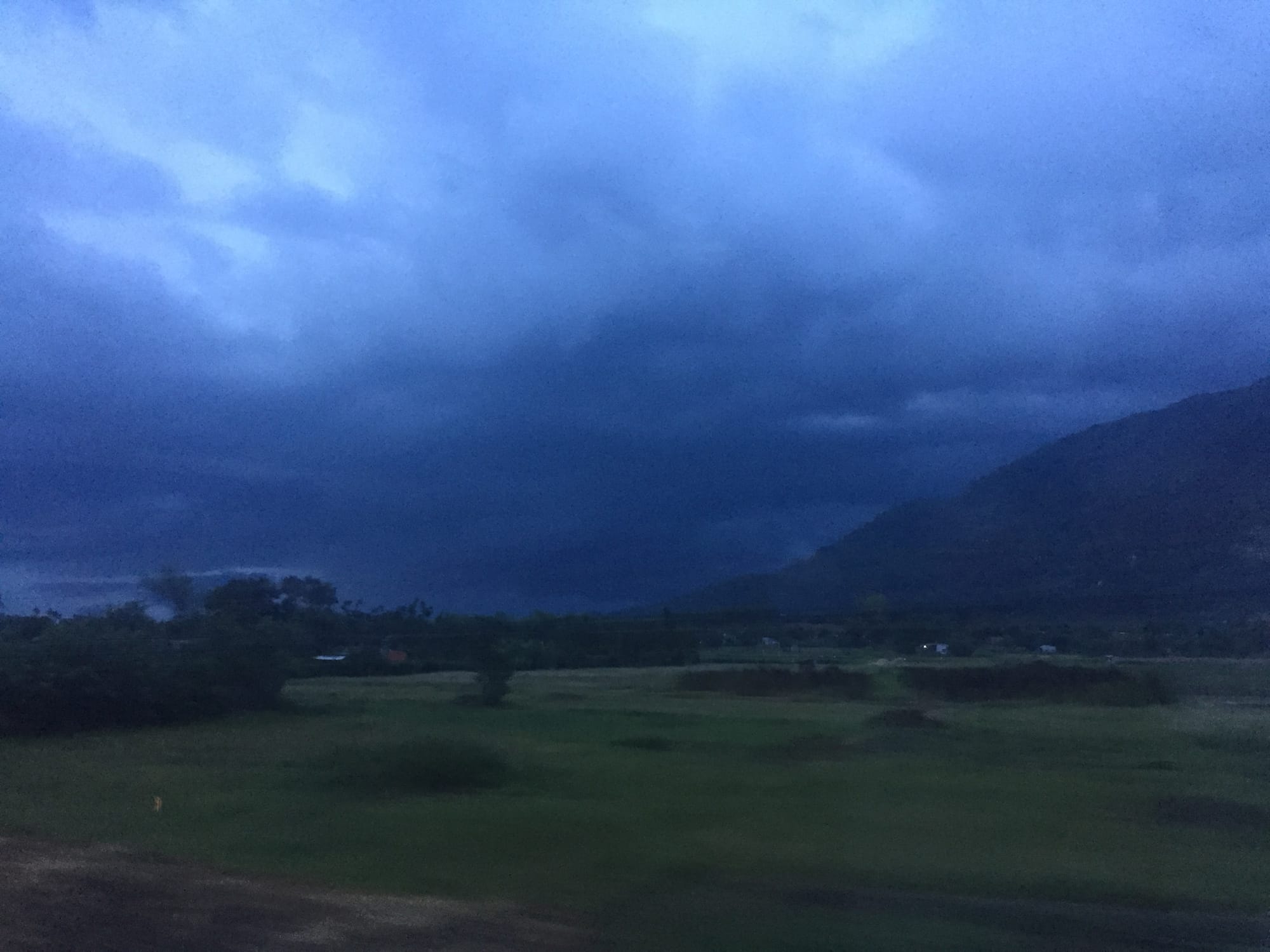
The storm soon caught up with us and treated us to a fantastic lightning display from the train window.
Finally, after 35 hours, we arrived at Ho Chi Minh City (Saigon) railway station.
Summary
It was a stunning train ride and an experience that I thoroughly enjoyed. It was a great way to see Vietnam, and I met and saw some interesting people. Did I sleep well? Yes, as well as can be expected on a train. Was the food exceptional? Well, no, I was on a train!
I know train travel like this is not for everyone, but if you have the time and don't mind a few 'rough edges’, it is a great way to see the country. Would I travel Vietnam Railways again? In a word — YES!
On the 1726 km trip, the train had a maximum speed of around 70 km per hour. The average speed over the distance was about 50 km per hour (we did stop at a lot in stations and in sidings to let other trains pass). And the total journey from Hanoi to Ho Chi Minh City (Saigon) should have taken 35 hours and 3 minutes (2,103 minutes), and we did it in 2,103 minutes. Bang on time. Remarkable.
